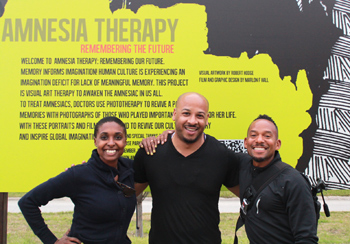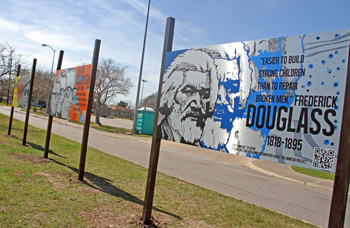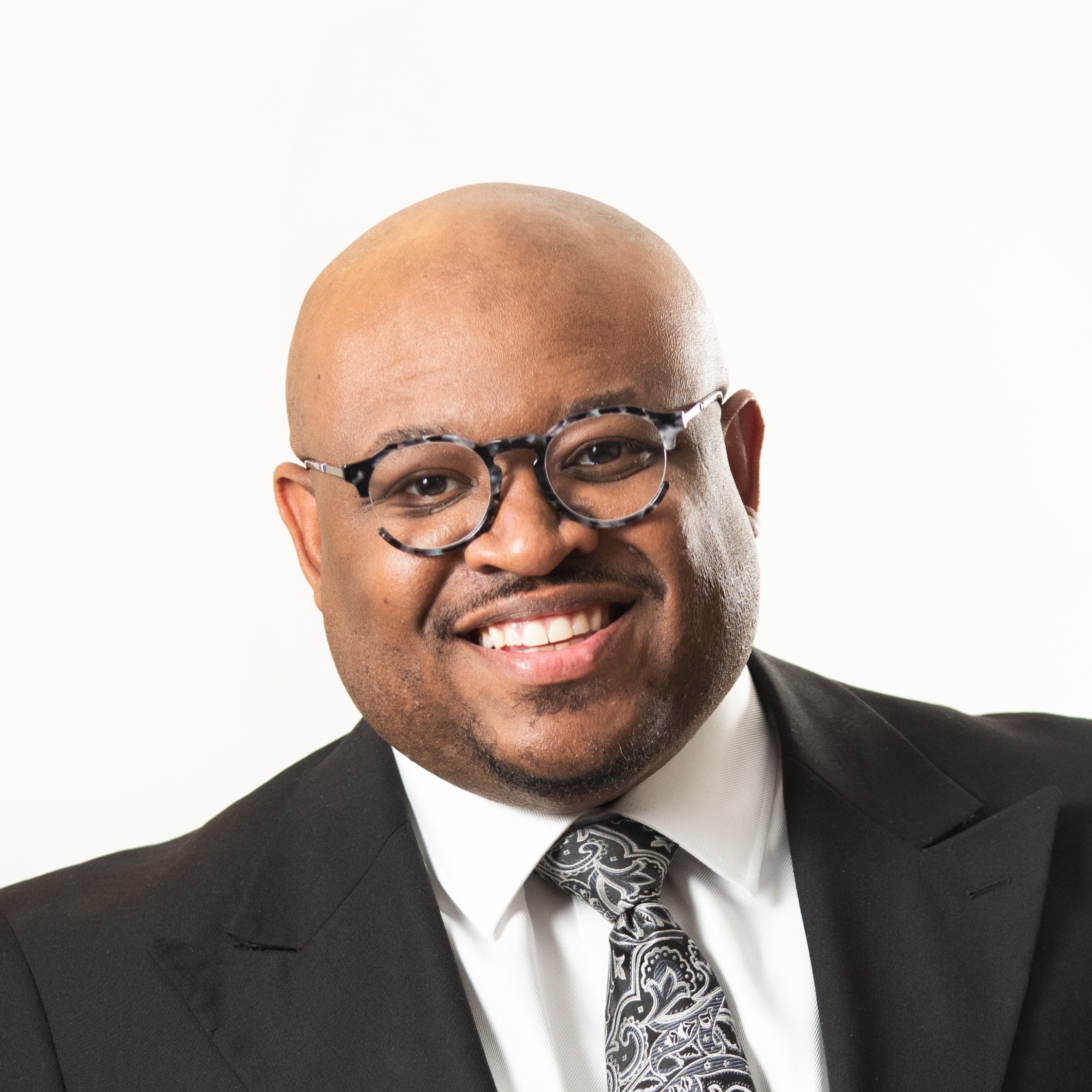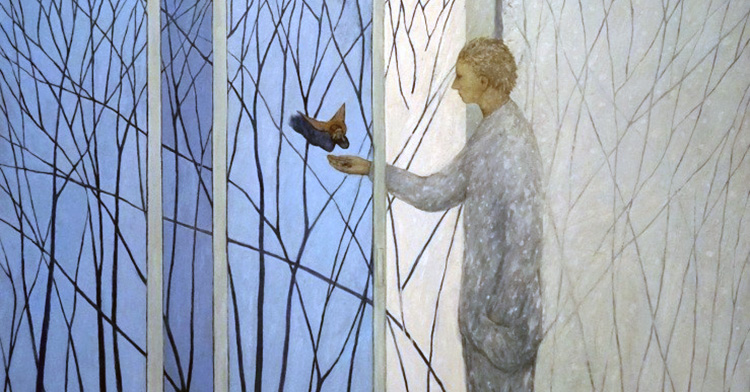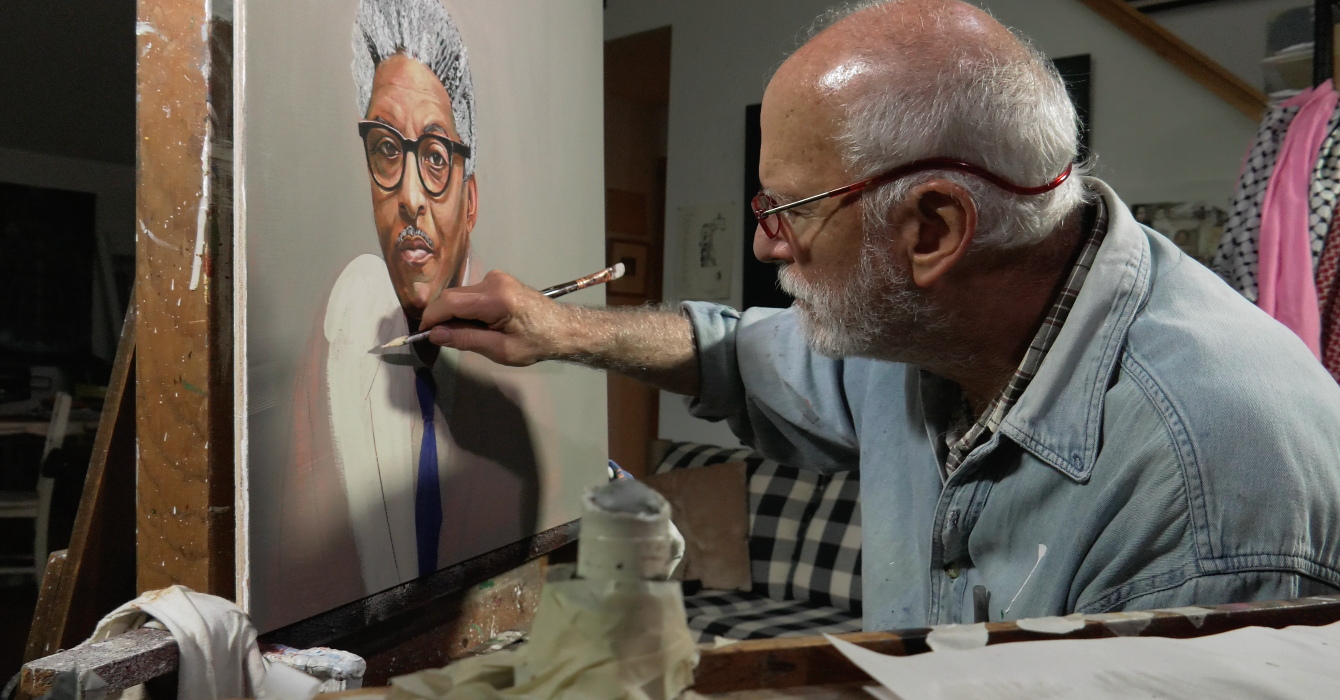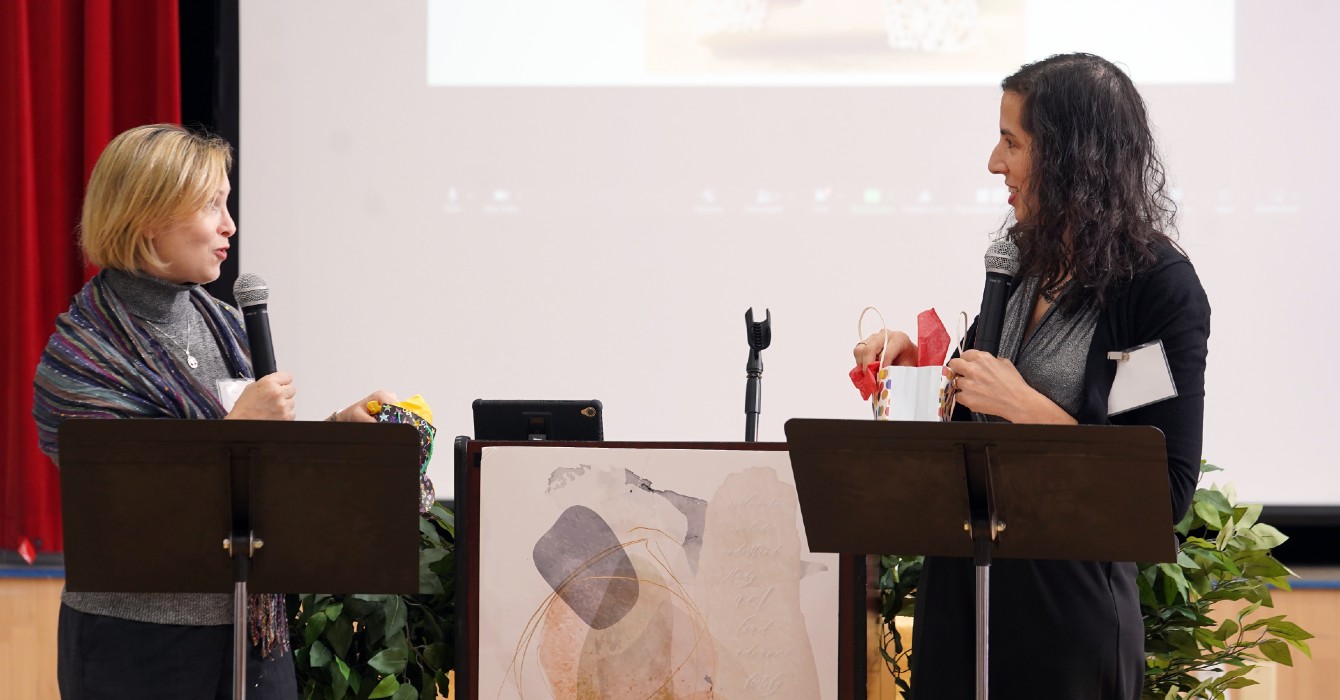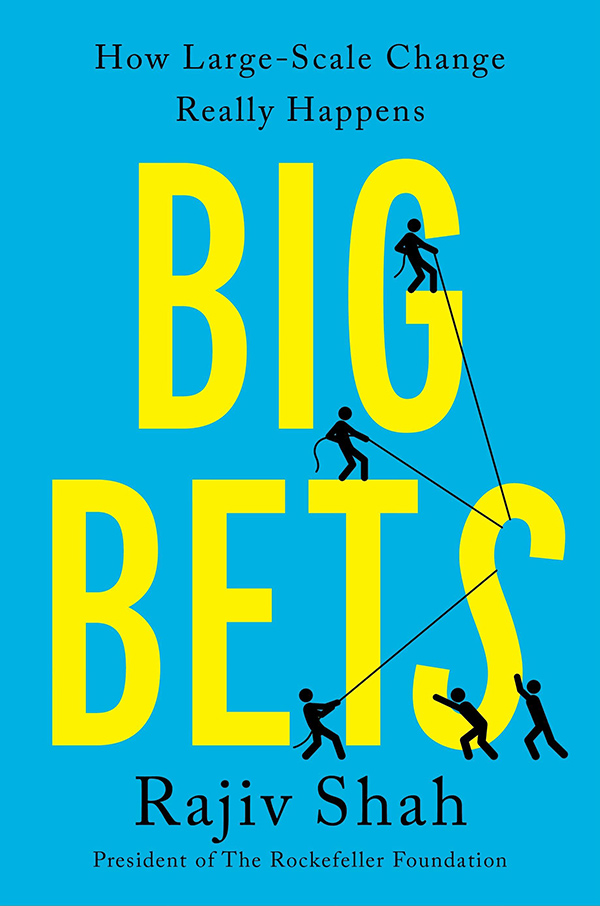The Pleasantville section of Houston is a forgotten community. It sits hard against two highways in a heavily industrialized section of the city near the port. Hidden from view, the aging, African-American neighborhood can only be reached by driving past hulking warehouses and industrial plants, dodging dust-kicking 18-wheelers along the way.
“It’s an island,” said Jerry Davis, who represents the neighborhood in city council. “It’s isolated.”
That isolation makes it easy for the rest of the city to forget that Pleasantville exists, but the residents are beneficiaries of a public art project designed to help them remember. “Amnesia Therapy: Remembering the Future” was funded by the city and launched in Pleasantville in February. The traveling art installation is intended to remind residents of downtrodden areas of a more illustrious past.
The artwork was designed and installed by members of the Awakenings Movement, a nontraditional, nondenominational church. The project consists of six 4-foot-by-6-foot aluminum panels featuring the likenesses of historical figures, both local and national, created by Robert Hodge, a Houston artist. Each panel has a bar code that can be scanned for more information.
It is a modest manifestation of a big idea that Marlon Hall, the 40-year-old leader of the Awakenings Movement, has nurtured for years.
“We are all suffering from cultural amnesia,” said Hall, a trained anthropologist and pastor who applies his observational and analytical skills to contemporary culture. “We seem to have no memory of who we are, who God is and what he has called us to do. … In order to imagine the future, we have to remember the past.”
The building is not the church
Reviving cultural memory and connecting to the past is a central idea behind both the installation and the larger Awakenings Movement, which Hall founded in 2005 because he felt that traditional churches no longer spoke to the lives of young people.
Too many churches were tied down in outdated traditions and were boring, he said. People associated church with much that had nothing to do with following the example of Jesus.
Hall grew up in a family of religious nomads. His parents tried lots of different traditions -- United Methodist, Baptist, United Church of Christ -- but never settled on any one denomination. Hall was educated at Fisk and Vanderbilt universities and ordained in the United Church of Christ after attending what is now the Houston Graduate School of Theology.
Questions to consider
Questions to consider:
- Marlon Hall says remembering the past is key to imagining the future. As you imagine your organization’s future, how do its traditions influence your vision?
- Hall wanted to do work in Africa, but his experience there sent him back to his community. Is there work you are overlooking in your own backyard?
- Hall and Danielle Fanfair have developed a set of practices to help develop a particular mindset. Would the members of your organization benefit from such a process?
- Challenging the traditional church structure has caused the Awakenings Movement worship attendance to fluctuate. What elements of your congregation’s identity are so important that you would be willing to shrink to maintain them?
He then worked at Windsor Village United Methodist Church, the 16,000-member Southwest Houston congregation led by the Rev. Kirbyjon Caldwell, where he was inspired by the teachings of John Wesley. Among other things, Hall led an outreach ministry there that targeted Gen Xers, just as the Awakenings Movement does now.
One way he did that was by redefining the meaning of church.
“I did an anthropological study about why young people were not going to church,” he said. “The study revealed that people my age didn’t want to go to the church building itself.” They were receptive to the teachings of Jesus and to following his example, but the church building -- and much that they associated with it, including fundraising and dogma -- turned them off, Hall said.
So Hall’s Awakenings Movement was founded with no building. From the start, it has held worship services in restaurants, bars, coffee shops -- “accessible worship,” he calls it. Hall tries to hold services in one place for no more than three months at a time.
“I wanted to let them see that we were not a church; we were a people,” he said.
Involved in civic projects and startup businesses, Awakenings Movement is as much an idea incubator as a church. Its members include rappers, chefs, businesspeople, visual artists and writers. It focuses on public service, entrepreneurship and artistic creation -- what Hall calls “life art.”
“We believe the mission of the church is to reveal beauty in the world,” he said.
His movement is as nomadic as Hall’s parents were in their long-ago religious wanderings. In its eight years of existence, Awakenings Movement has moved into and helped restore a neglected ballroom from black Houston’s storied past; founded and operated a unique restaurant that brought together a collection of emerging chefs; and held services in popular music venues more used to the sounds of hip-hop and rock than the teachings of the Bible.
Encouraging people to follow their dreams, whether personally or professionally, is a large focus of the Awakenings Movement. Hall said his approach was inspired by the teachings of the Rev. Erwin McManus, lead pastor of Mosaic Church in Los Angeles.
“Ministry can be life art,” Hall said. “Beauty is the goal of everything that we do.”
Memory feeds imagination
Pleasantville could use some beauty. The neighborhood of one-story wood and brick homes has been ignored by politicians except at election time, said Davis, the city councilman, who has held office for a little over a year.
The art installation was Davis’ idea. He wanted to bring a beautification project to the community that would instill pride by emphasizing history. He asked Hall, whom he has known since high school, to become involved.
“Young kids go to the Judson Robinson Sr. Community Center, across the street from the artwork, and they have no idea who he is,” Davis said. “Robinson built Pleasantville,” Davis said of the founding member of the Houston Area Urban League, who was also the father of the city’s first African-American city council member.
In addition to Robinson, Davis wanted to honor the Rev. Hayward Wiggins, an influential Pleasantville pastor who led the Gethsemane Missionary Baptist Church for 33 years until his death in 1997. The new councilman said he spoke with Mayor Annise Parker, who agreed that the installation was a good idea. In February, Hall’s group was awarded a $10,000 grant from the Houston Arts Alliance.
Hall and his team supplemented the Pleasantville heroes with national figures. They include Sam John “Lightnin’” Hopkins, an influential blues singer and guitarist from Houston who died in 1982; and Alabama-born Willie Mae “Big Mama” Thornton, who made recordings at Houston’s Peacock Records in the 1950s and had a big hit with “Hound Dog” three years before Elvis Presley. Others include people with no direct connection to the city, such as Frederick Douglass, the abolitionist, and Harlem Renaissance poet Langston Hughes.
The idea for the art installation dovetailed with ideas that Hall has been developing since he visited Kenya with a group of Awakenings Movement members in 2010. Hall had wanted to stage a joint art show in Kenya featuring Houston and Nairobi artists. He was brought up short, however, when one of the Kenyan artists told him no.
“Memory fuels imagination,” the artist told Hall. Black Africans have been oriented toward Europe for so long that they have no memory of themselves as Africans. His point: Before either African or African-American artists can produce worthy work, they first have to overcome the “cultural amnesia” that makes them strangers to themselves.
The words had a profound effect both on Hall and on Hodge, who was part of the group. Hodge changed his entire approach to creating art. After graduating from Houston’s High School for the Performing and Visual Arts, he had studied at Pratt in New York and the Atlanta College of Art, he said, but in Kenya he started to produce work with a connection to African culture. He collected African posters and fabrics and began to sew them, collagelike, into his canvases. He started to accentuate Kenyan patterns in his drawings and to draw on African and African-American history for subject matter.
As for Hall, he brought the idea of “amnesia therapy” with him back to Houston. It now has become the centerpiece not just of the art installation but of everything in the Awakenings Movement. A filmmaker since childhood, Hall makes short documentaries about cultural amnesia.
He and Danielle Fanfair, his partner in Awakenings, are working with Hodge on an Amnesia Project book that will be filled with images and stories from African-American history. This month, “Amnesia Therapy” will begin to travel throughout the city. It will grow bigger as it moves, with Hodge adding a historical figure from each neighborhood the exhibit visits.
Hall has integrated amnesia therapy into the very fabric of the Awakenings Movement, including its Sunday worship. He and Fanfair -- “the smart one,” Hall habitually calls her -- came up with a process based in part on techniques that psychiatrists sometimes use to treat people suffering from amnesia.
After returning from Africa, they began to lead their members through the steps of their process, which includes photo therapy, music and journaling, all in an effort to uncover each person’s buried, truest self and to discover each person’s deepest personal or professional desire. These desires often have no overt religious significance -- one member’s deepest desire was to land a job at Google, which Hall said he succeeded in doing. But Hall sees the beauty of God’s work in these achievements.
Fanfair speaks in grand terms of how amnesia therapy will help transform not just depressed neighborhoods such as Pleasantville but all of Houston, and even beyond.
In one of Hall’s documentaries, Fanfair compares the Pleasantville “Amnesia Therapy” art project to individual therapy. “We want to do the same thing for our city,” she said.
Speaking to a generation
On a recent Sunday morning, about 50 people showed up for Awakenings Movement services at a coffee shop in Montrose, an arty, restaurant- and nightclub-filled neighborhood near downtown. The organization maintains an office in the historically African-American Third Ward, the focus of much of its activity, but it holds worship services all over.
The service has a strong emphasis on amnesia therapy practices, including journaling. Near the start, Fanfair plays a recording of “Redemption Song” by Bob Marley, after explaining that the late reggae star wrote the lyrics after learning that he had cancer. She makes sure that everyone has a lyric sheet, then asks people to pick out parts of the song that speak to them and to discuss them briefly.
After that, she and Hall play a hip-hop video that deals with the pain of divorce, after which Fanfair conducts an onstage interview with the two rappers and the video director.
Just as a first-time visitor begins to wonder how all this can be considered church, Hall steps onstage, holding a Bible. He wears black jeans, a gray pullover shirt and black sneakers with red laces. He begins to preach, using PowerPoint and short videos to illustrate his sermon. As he reads from the book of John, chapter 9, a few of the members pull out their own Bibles, but many more follow along using smartphone apps. The crowd is mostly black with a handful of whites, sprinkled about the coffee shop’s large backroom performance area. A couple of members look as if they may be approaching 50, but most are in their 20s and 30s.
Toward the end, Hall announces that after the next Sunday’s service, worship will move to a different location, though he doesn’t yet know where.
After the service, one of the hip-hop artists, Donald Rose, tells a visitor that he grew up Seventh-day Adventist but was drawn to the Awakenings Movement because he likes its informality and unconventional nature. He also likes that so many of the members are involved in the arts. “The services here speak to my generation,” said Rose, who is 37.
Hodge, the visual artist, has a similar story. He grew up Methodist and gravitated to St. John’s United Methodist Church downtown, drawn to it for some of the same reasons that later would lead him to the Awakenings Movement, including its focus on entrepreneurialism. Hodge grew disenchanted with St. John’s, he said, because the church grew too big; Hodge likes that the Awakenings Movement is so intimate and personal.
Big ambitions for a small movement
Although their goals are hugely ambitious, the movement itself is quite small -- only a few dozen members at this point.
Membership has fluctuated wildly. It is perhaps telling that Awakenings’ period of greatest growth occurred the one time it stayed put in one place for two years. The movement moved into and helped restore the Eldorado Ballroom, a neglected nightclub from black Houston’s storied past. It stayed for two years, from 2008 to 2010, and grew from 75 to about 1,000 members, Hall said.
It bothered him, though, that people began to think of the venerable music venue as the church home. “The church is not a building,” he said. “The church should be in you.”
So in 2010, he began once again to have nomadic worship services. On the first Sunday of the month, he held services in a popular current music club, using the service as a showcase for local visual, musical and film artists. On the second Sunday, worship consisted of community service, with members volunteering in homeless shelters or creating community gardens. On the third Sunday, they met in a bar. Members were invited to bring along nonbelievers for Q&As about God and religion. On the fourth Sunday, members divided into groups and took field trips to museums or to the park.
Hall knew that membership would drop when he made the change, he said. But it was important for the Awakenings Movement to not just be another of Houston’s thousands of churches. The city didn’t need another church, he said; it needed imagination.
Membership dropped back down to about 75. And the plummet didn’t end there. In 2011, the Awakenings Movement founded the Eat Gallery, an innovative restaurant concept that lured people from all over town to Third Ward, a neighborhood that wasn’t known for sophisticated cuisine. It was a hit with diners and the media but it turned off some members.
“Some members couldn’t deal with their pastor making double lattes at a coffee shop,” Hall said, laughing.
He calls the Eat Gallery a “sifter.” The 35 members who stuck it out were fully committed to the concept behind the movement and are working on making a difference in the city, he said.
That mission includes worshipping, but it also means installing public art, opening a restaurant -- and other projects not yet imagined.
“We were sad to lose certain people who might’ve thought that we were just a church and not a movement of God,” Hall said, “but we were happy to grow closer to our mission.”

